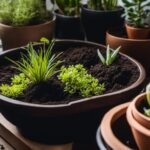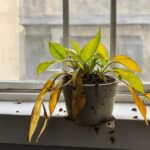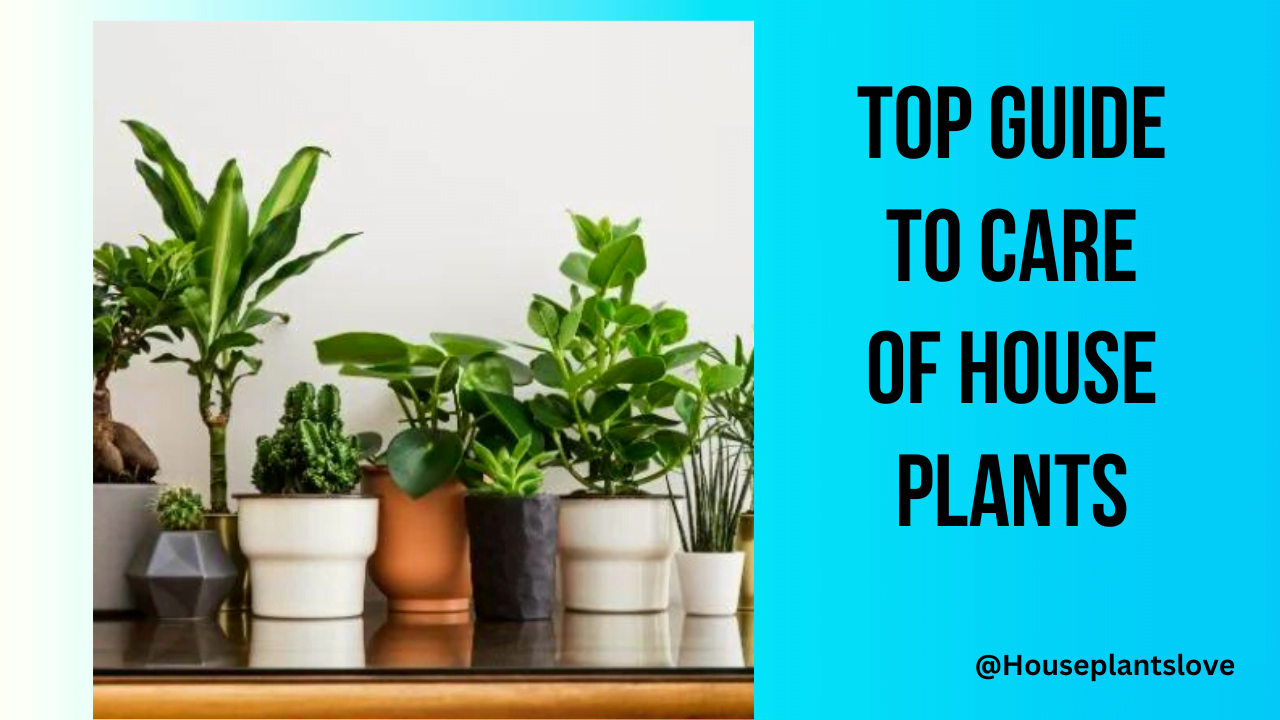How to Raise Humidity for House Plants or Learn best essential tips Increasing Humidity for Indoor Plants in winter or summer to ensure a thriving home garden
Lack of humidity can have a detrimental effect on indoor plants, especially during the winter months. The dry heat in our homes can cause plants to lose moisture, resulting in dry and brown leaf edges. But don’t worry, there are effective methods to increase humidity for house plants that I’m going to share with you!
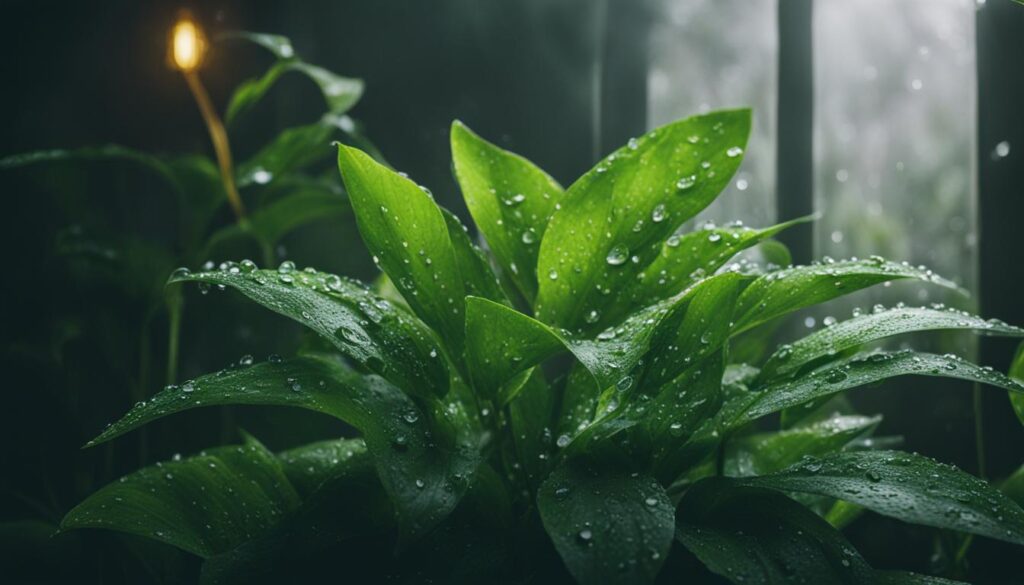
Key Takeaways of How to increase humidity for indoor plants
- Humidity is crucial for the health and growth of indoor plants, especially tropical varieties.
- Most common tropical houseplants prefer a humidity level of around 50%.
- Simple ways to increase humidity include misting the leaves, using pebble trays, and using humidifiers specifically designed for plants.
- Misting the leaves with water is a cost-effective method to provide immediate moisture to the plants.
- Pebble trays create a humid microclimate by allowing water to gradually evaporate around the plants.
The Importance of Humidity for Indoor Plants
Humidity levels play a crucial role in the overall health and well-being of indoor plants. It is important to understand the ideal humidity range for house plants, as this can significantly impact their growth and vitality. Most common tropical houseplants prefer a humidity level of around 50%, while other species may have slightly different requirements.
When humidity drops below the ideal range, indoor plants can suffer from various houseplant issues such as brown leaf edges, wilting, and yellowing leaves. These symptoms are clear indicators that the plants are not receiving adequate moisture and humidity. On the other hand, when humidity levels are too high, it can create a favorable environment for the growth of mold and mildew, which can be detrimental to plants.
By maintaining the right humidity levels for indoor plants, you can ensure optimal growth and prevent common plant problems. Providing plants with the appropriate humidity helps to keep their foliage healthy, promotes proper transpiration, and supports efficient nutrient absorption. It also helps maintain a balanced and comfortable environment for both the plants and the occupants of the space.
The Ideal Humidity Range for House Plants
While the ideal humidity range for house plants may vary depending on the specific species, a general guideline is to aim for a humidity level of around 50%. This level mimics the conditions found in many tropical regions where most houseplants originate from. However, it’s essential to consider the specific needs of each plant as some may require slightly higher or lower humidity levels.
Monitoring humidity levels can be done using a hygrometer, a device that measures relative humidity. This tool can help you determine if the humidity in your home falls within the desired range and whether adjustments need to be made. By consistently providing the appropriate humidity levels, you can ensure the long-term health and vitality of your indoor plants.
| Plant Species | Ideal Humidity Range |
|---|---|
| Monstera deliciosa | 40% – 60% |
| Spider Plant (Chlorophytum comosum) | 40% – 50% |
| Peace Lily (Spathiphyllum) | 50% – 70% |
| Ferns | 50% – 70% |
| Orchids | 40% – 60% |
Remember to take into account the specific needs of each plant and adjust the humidity levels accordingly. By providing the ideal humidity range for your indoor plants, you can create an environment that promotes healthy growth and thriving foliage.
Simple Ways to Increase Humidity for Indoor Plants
When it comes to caring for indoor plants, maintaining the right humidity level is crucial for their overall health and well-being. Dry indoor air can cause plants to lose moisture, resulting in dry leaves and stunted growth. Fortunately, there are several simple and effective ways to increase humidity for house plants and create a more favorable environment for their growth.
Misting the Leaves
One easy and cost-effective method to raise humidity for indoor plants is by misting their leaves. Fill a spray bottle with filtered or distilled water and gently mist the leaves, focusing on the undersides where the stomata are located. The water droplets on the leaves will gradually evaporate, creating a localized increase in humidity around the plant. Misting can be done once or twice a day, depending on the dryness of the environment and the plant’s needs.
Using Pebble Trays
Another effective way to increase humidity is by using pebble trays. Fill a shallow tray with clean pebbles and water, then place the potted plant on top of the pebbles. As the water evaporates, it creates moisture in the surrounding air, increasing humidity levels around the plant. This method is particularly useful for plants that prefer to have their roots dry and don’t like standing in water. Remember to regularly check the water level in the tray and refill as needed to maintain a consistent humidity level.
Using Humidifiers
If you’re looking for a more automated solution, consider using a humidifier specifically designed for plants. These devices release a fine mist of water into the air, creating an optimal humidity level for indoor plants. There are various types of humidifiers available, ranging in price and capacity. Position the humidifier near your plants, but not too close to avoid water damage or mold growth. Regularly monitor and adjust the humidity setting based on the needs of your plants.
By implementing these simple methods, you can effectively increase humidity for indoor plants and create a more favorable environment for their growth and well-being. Remember to monitor the humidity levels regularly and adjust as needed to provide the optimal conditions for your house plants.
The Benefits of Misting Plants
Misting the leaves of indoor plants with water is a simple yet effective method to increase humidity and promote the overall health of house plants. By creating a localized increase in humidity, misting can help prevent issues such as dry leaf edges and wilting. Additionally, it provides immediate moisture to the plants, helping them thrive in environments with low humidity.
When misting plants, it is important to use filtered or distilled water to avoid depositing minerals or chemicals on the leaves. This ensures that the plants receive clean and pure moisture. Misting can be done multiple times a day, depending on the dryness of the environment and the specific needs of the plants.
Not only does misting plants increase humidity, but it also contributes to their overall aesthetic appeal. The fine water droplets on the leaves create a visually pleasing effect and can make the plants look fresher and more vibrant. It is a cost-effective and easy way to provide the necessary moisture for indoor plants.
Tips for Misting Plants:
- Use a spray bottle with a fine mist setting to evenly distribute water on the leaves.
- Mist the plants in the morning to allow time for the water droplets to evaporate throughout the day.
- Avoid misting plants with hairy or fuzzy leaves, as excessive moisture can lead to fungal diseases.
- Take into account the specific needs of different plant species, as some may require more or less frequent misting.
| Pros | Cons |
|---|---|
| Increases humidity around the plants | May not be sufficient to raise humidity significantly in larger spaces |
| Provides immediate moisture to the plants | Requires regular and consistent misting to maintain humidity levels |
| Enhances the visual appeal of the plants | May not be suitable for all plant species, particularly those with hairy or fuzzy leaves |
Using Pebble Trays to Increase Humidity for Houseplants
If you’re looking for a simple and effective way to increase humidity for your indoor plants, consider using pebble trays. These clever devices create a gradual evaporation process that helps to maintain a higher humidity level around your plants.
To create a pebble tray, simply fill a shallow tray with clean pebbles and add water until the pebbles are partially submerged. Place the tray underneath your plant’s pot, ensuring that the water level is below the bottom of the pot. As the water evaporates, it releases moisture into the air, creating a humid microclimate for your plants.
Pebble trays are particularly useful when you have plants that prefer to have their roots dry and don’t want to risk overwatering. The pebbles elevate the plant’s pot above the water, preventing the roots from sitting in excess moisture. It’s important to monitor the water level in the tray and refill it as needed to maintain a consistent humidity level.
Using pebble trays is a convenient and cost-effective method to increase humidity for your indoor plants. It’s a great option for plant owners who want to create a more favorable environment for their moisture-loving plants without investing in expensive humidifying equipment.
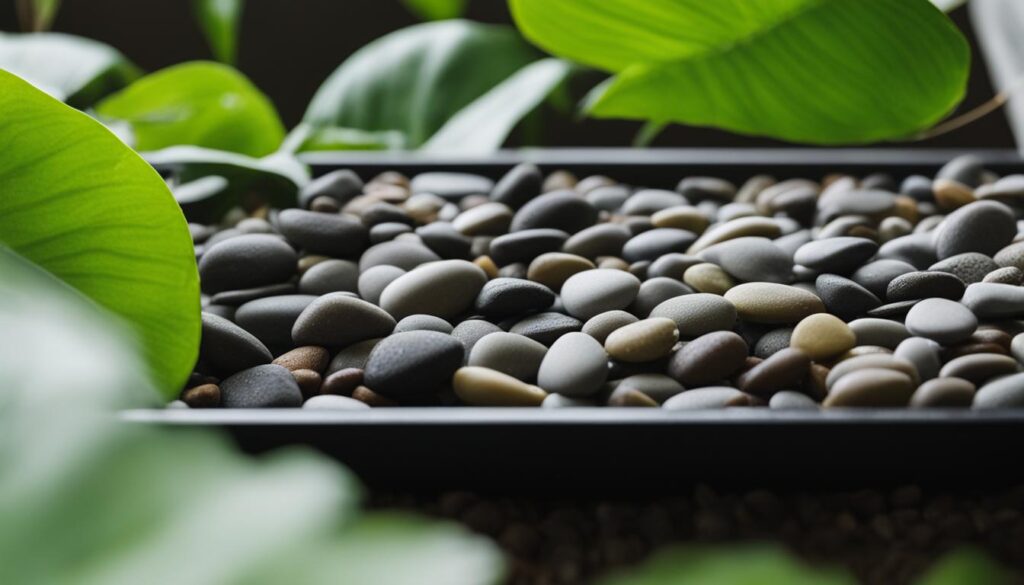
Comparison of Different Methods to Increase Humidity for indoor plants
| Methods | Benefits | Considerations |
|---|---|---|
| Misting Plants | – Provides immediate moisture – Cost-effective – Simple to do multiple times a day | – May not be sufficient for plants with high humidity requirements |
| Pebble Trays | – Creates a gradual evaporation process – Helps maintain a consistent humidity level – Suitable for plants that prefer dry roots | – Requires monitoring and refilling of water in the tray |
| Humidifiers | – Highly effective in increasing humidity levels – Suitable for larger spaces – Can be set to desired humidity level | – Require investment in equipment – Need regular maintenance and cleaning |
| Plant Placement | – Naturally increases humidity when grouped together – Creates a visually appealing plant display | – Requires available space for grouping plants |
| Terrariums | – Provides a controlled environment for moisture-loving plants – Enhances visual appeal – Can be adapted to different plant sizes | – Requires proper ventilation to prevent moisture buildup |
Overall, using pebble trays is a practical and effective method to increase humidity for your indoor plants. Combined with other methods such as misting and proper plant placement, you can create a healthier and more favorable environment for your plants to thrive.
The Power of Humidifiers for Indoor Plants
When it comes to raising humidity levels for your indoor plants, humidifiers are a game-changer. These highly effective devices are designed to release a fine mist of water into the air, creating an optimal humidity level for your plants to thrive. Humidifiers come in various types and price ranges, making them accessible to all plant owners.
One popular option is the ultrasonic humidifier, which uses ultrasonic vibrations to transform water into a fine mist. These devices are affordable and efficient in increasing humidity levels for your plants. Additionally, smaller models like the VicTsing humidifier are portable and convenient for use in individual rooms or smaller spaces.
When using a humidifier, it’s important to position it appropriately to avoid water damage or the growth of mold in your home. Place the humidifier near your plants, ensuring they receive the benefits of the increased humidity without getting soaked. Regular maintenance, such as cleaning the humidifier and refilling it with clean water, will also help maintain a healthy environment for your plants. With the power of humidifiers, you can create an optimal humid environment for your indoor plants to thrive.
| Benefits of Humidifiers for Indoor Plants | Types of Humidifiers | Price Range |
|---|---|---|
| Increases humidity levels, promoting healthier plant growth | Ultrasonic humidifiers | $30 to $250 |
| Prevents issues caused by low humidity, such as dry and brown leaf edges | VicTsing humidifiers | |
| Creates an optimal environment for moisture-loving plants |
Maximizing Humidity through Plant Placement
Placing a group of plants together in a specific area of a room can naturally create a higher humidity environment. As the plants release moisture through transpiration, the surrounding air becomes more humid. Having enough plants in a corner of a house or room can significantly increase humidity levels, benefiting both the plants and the occupants. Additionally, placing plants in naturally humid areas such as bathrooms or kitchens can provide them with the moisture they need to thrive.
Huddle Plants
One effective method to maximize humidity is to huddle plants together. By grouping plants in close proximity, they create a microclimate that retains moisture and increases humidity. This technique is particularly useful in drier environments or during winter when indoor heating can decrease humidity levels. Choose a corner or designated area where multiple plants can be placed together, creating a lush and humid oasis.
Place Plants in a Humid Room
Bathrooms and kitchens are often naturally humid due to activities like showering or cooking. Take advantage of Bathroom spaces by placing plants in these rooms. The increased humidity from showers or steamy cooking sessions will provide an ideal environment for moisture-loving plants. Just be mindful of the specific light and temperature requirements of your plants when selecting the room for placement.
Benefits of Maximizing Humidity through Plant Placement
- Increased humidity levels
- Improved health and growth of plants
- Prevention of dryness and browning of leaves
- Creation of a lush and visually appealing indoor environment
Maximizing humidity through plant placement is a simple and effective way to create a healthier indoor environment for your plants. By huddling plants together or placing them in naturally humid rooms, you can provide them with the optimal moisture they need to thrive. Not only will this benefit the plants by preventing dryness and browning of leaves, but it will also enhance the overall aesthetics of your indoor space and plant create positive energy. Embrace the power of plant placement and enjoy the benefits of a lush and humid environment.
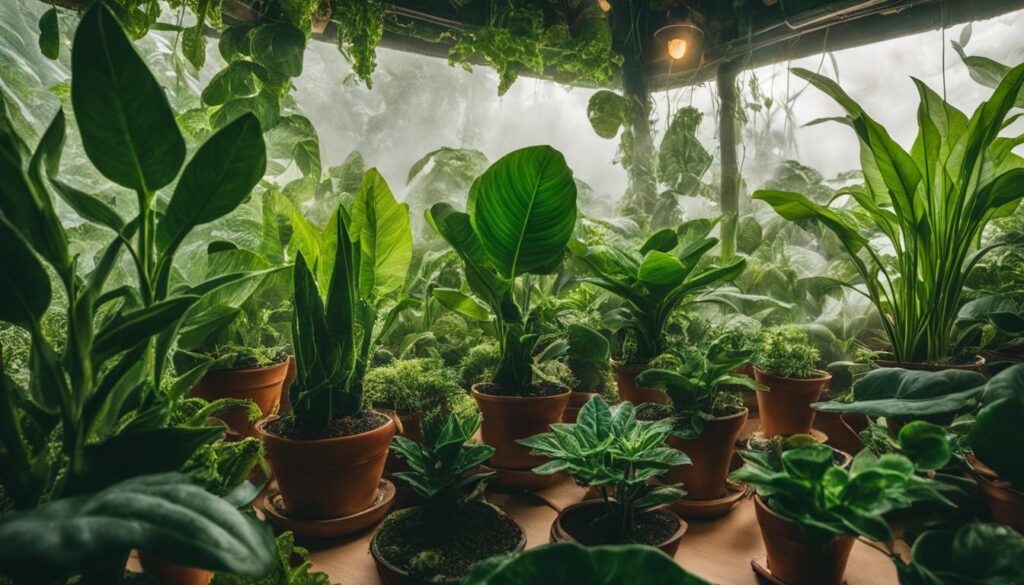
Enhancing Humidity with Terrariums
Terrariums offer a unique and visually appealing way to create a controlled environment for indoor plants that thrive in high humidity. By utilizing a glass enclosure, terrariums trap moisture and encourage evapotranspiration, resulting in increased humidity levels around the plant. Whether you choose a closed or semi-open terrarium, the enclosed space helps to create a humid microclimate that is ideal for moisture-loving plants.
Creating a terrarium environment is relatively simple. Start by selecting a glass container that is transparent and has a lid or removable top. Fill the bottom of the container with a layer of pebbles to promote drainage. Next, add a layer of activated charcoal to help prevent the growth of mold or bacteria. Then, layer soil appropriate for your plants and arrange them in a visually appealing way. Finally, mist the plants and place the lid on the container to create a sealed environment.
One of the benefits of terrariums is that they require minimal maintenance. The enclosed space helps to retain moisture, reducing the need for frequent watering. However, it is essential to monitor the humidity level within the terrarium to ensure it remains within the optimal range for your plants. If the humidity becomes too high, simply remove the lid for a period of time to allow excess moisture to escape.
Factors to Consider when Creating a Terrarium:
- Select plants that thrive in a high humidity environment, such as ferns, mosses, and orchids. Research the specific humidity requirements of your chosen plants to ensure they will thrive in a terrarium.
- Place the terrarium in an area that receives indirect sunlight, as direct sunlight can create excessive heat and moisture within the enclosure.
- Ensure proper ventilation by periodically removing the lid or creating small openings to allow fresh air to circulate. This helps prevent the growth of mold or the development of stagnant air.
- Regularly check the moisture level of the soil. If it feels dry, use a spray bottle to mist the plants and soil to provide additional moisture.
| Plant | Light Requirement | Humidity Preference |
|---|---|---|
| Fern | Indirect sunlight | High humidity |
| Moss | Low to moderate light | High humidity |
| Orchid | Indirect sunlight | High humidity |
By creating a terrarium environment, you can provide your moisture-loving plants with the perfect balance of humidity and moisture. Not only does it create an aesthetically pleasing display, but it also offers a simple and effective way to enhance the humidity levels in your indoor space.
Other Considerations for Increasing Humidity
When it comes to increasing humidity for indoor plants, there are a few other techniques that can be beneficial. One method is to give your plants a bath or shower. By placing them in a bathroom with high humidity, they can absorb moisture from the air. Bathrooms naturally have higher humidity levels, making them an ideal environment for certain plants. Just remember to avoid overwatering and monitor the drying time of the plant after its refreshing spa session.
In addition to giving plants a bath, another strategy is to strategically group plants together. When plants are placed in close proximity to each other, they can collectively generate more moisture, creating a higher humidity level in the surrounding area. This natural process helps to create an optimal humid environment for your plants to thrive. So, don’t be afraid to gather your leafy friends together and let them work their magic.
By incorporating these additional considerations into your indoor plant care routine, you can create the perfect humid environment for your green companions. Whether it’s giving them a spa-like bath or arranging them for a plant party, these methods will ensure that your plants receive the moisture they need to stay healthy and happy.
FAQ
Why is humidity important for indoor plants?
Humidity is important for indoor plants because it helps them thrive and stay healthy. Lack of humidity can cause issues such as dry and brown leaf edges, wilting, and yellowing leaves.
What is the ideal humidity range for house plants?
Most common tropical houseplants prefer a humidity level around 50%. However, the ideal humidity range may vary depending on the specific species of the plant.
How can I increase humidity for my indoor plants?
There are several simple and effective methods to increase humidity for indoor plants. These include misting the leaves with water, using pebble trays filled with water, using humidifiers, grouping plants together, and creating a terrarium environment.
Is misting the leaves of indoor plants effective in increasing humidity?
Yes, misting the leaves of indoor plants with water is a cost-effective and simple method to increase humidity. The water droplets on the leaves gradually evaporate, creating a localized increase in humidity around the plant.
How do pebble trays help increase humidity?
Pebble trays can help increase humidity by creating a gradual evaporation process. By placing a shallow tray filled with water and pebbles underneath the plant, the water slowly evaporates, creating a humid microclimate around the plant.
Are humidifiers effective in increasing humidity levels for indoor plants?
Yes, humidifiers are highly effective devices for increasing humidity levels. By releasing a fine mist of water into the air, humidifiers create an optimal humidity level for indoor plants. There are various types of humidifiers available, ranging in price and size.
Can grouping plants together help increase humidity?
Yes, placing a group of plants together in a specific area of a room can naturally create a higher humidity environment. As the plants release moisture through transpiration, the surrounding air becomes more humid.
How can terrariums enhance humidity for indoor plants?
Terrariums offer a controlled environment for indoor plants that thrive in high humidity. The glass enclosure traps moisture and encourages evapotranspiration, resulting in increased humidity levels around the plant.
Are there other ways to increase humidity for house plants?
Yes, other methods include giving plants a bath or shower to absorb moisture in a bathroom with high humidity, and strategically placing plants together to generate more moisture and create a higher humidity level in the surrounding area.


